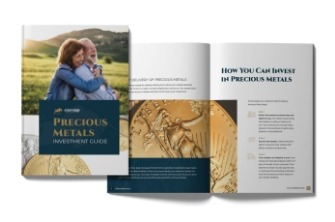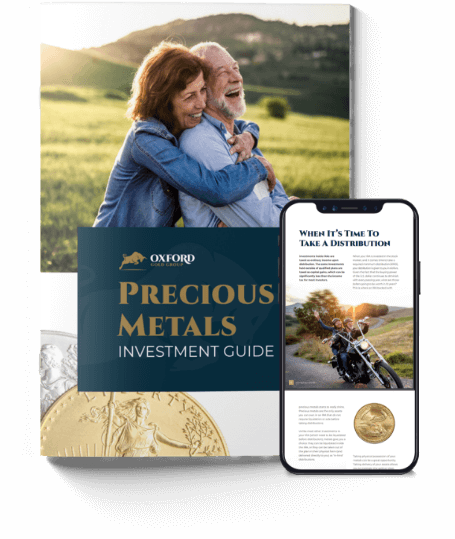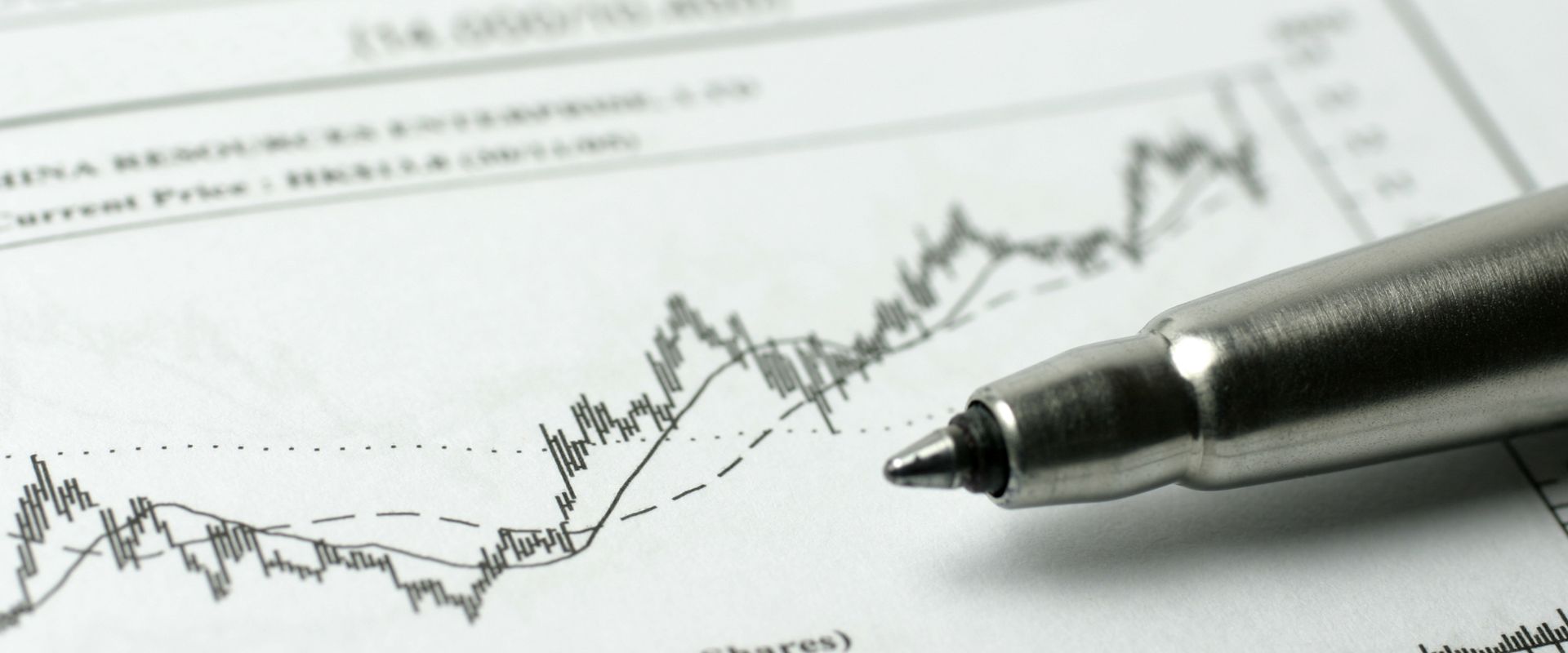Table of Contents
With inflation continuing to run rampant, holding your hard-earning savings in a traditional banking account can feel like burning money. Investing in secure, high-earning assets is a great way to combat inflation and protect your future, but which assets do you choose? The right investment option for you will depend on your financial goals, risk preferences, and market knowledge.
When weighing gold vs. the S&P 500, you have two decent yet vastly different options. One asset remains stable while the rest of the economy crumbles, while the other could potentially earn more, though it comes with higher risks.
Below, we will discuss everything you need to know about comparing gold, the S&P 500, and other growth stocks so you can select the right investment option for your portfolio. For investment support, you should consult your financial advisor. If you decide a gold investment aligns with your goals, contact Oxford Gold Group today at (833) 600-GOLD to apply for a gold IRA or shop our wide range of bullion online.
Gold vs. S&P 500: An Overview

Comparing gold with the S&P 500 is complex as both assets share a negative, but not perfectly inverse, relationship that responds to the current market conditions. Gold tends to perform well during poor economic periods because of its safe-haven status, while the S&P 500, like the greater stock market, thrives with a healthy economy. When other assets, like exchange-traded funds and the S&P 500, perform well, gold typically hits its low because traders move their funds into higher-risk assets with positive movement.
Both assets respond to the general market’s expansions and contractions: the S&P 500 delivers its best returns as the market expands, while gold excels during market contractions. Of course, some gray areas can occur here when geopolitical tensions, supply issues, and other factors come into play.
Because of this unique relationship, the primary thing you must consider when weighing both assets is whether you want something that offers long-term security during economic lulls (gold) or something that may provide short-term price spikes when the economy is doing well (S&P 500). Gold can help you store value in a stable and secure way, while the S&P 500 could provide high returns, though it’s a bigger risk.
Pros and Cons of Gold
All investment options have advantages and disadvantages. Gold offers the following pros:
- The ability to hedge against inflation
- Price stability during periods of economic crises
- Centuries of solid global demand
- A finite supply guarantees consistent long-term price increases
- Minimal counterparty risks
While gold may be a stable, solid choice, it comes with a few disadvantages as well. To start, storing and securing gold can be expensive and risky. The physical asset often requires expensive vaulting, insurance, and more.
When you’re ready to sell, you’ll face additional complications. Finding a buyer for the physical asset won’t be as instant as selling stocks. Because of the liquidity issues, day traders typically steer away from gold.
Finally, gold typically performs best when held long-term. You should not expect to see phenomenal short-term gains.
You can avoid some of these disadvantages by choosing a gold IRA for minimal maintenance or gold ETFs for easy liquidity.
Pros and Cons of the S&P 500
Like gold, the S&P 500 has its pros and cons. The primary advantages the asset provides include the following:
- Instant liquidity
- High return potential
- Decades of trading history
- Decent long-term performance potential
- Exposure to U.S. stocks
- Easy diversification
- Low pricing options
The primary disadvantage of the S&P 500 would be the associated risks. The asset often fails during poor economic periods, as with the rest of the stock market. You typically cannot forecast when an asset will “peak,” so you may not be able to sell before the crash comes and the prices drop.
The S&P 500 may respond more to market volatility, geopolitical tensions, and more. You also cannot use this asset to hedge against inflation.
Calculating the Gold-to-S&P 500 Ratio To Understand Investor Sentiment

Traders often use the negative relationship between gold vs. the S&P 500 to view market health in a deeper context. You can calculate the gold-to-S&P 500 ratio by dividing the current price of gold by the value of the S&P 500. You can then use the given ratio as an indicator of the current market sentiment:
- Higher gold purchases mean investors are turning to safe-haven assets, and the market isn’t doing well
- High S&P 500 demand likely means the U.S. stock market is performing well
Historical Performance of Each Asset
Making the right decision for your investment portfolio revolves around analyzing how the assets have performed in past environments similar to today. When looking at gold vs. the S&P 500 during years of economic turmoil, gold provides much higher returns. On average, gold offered 7.18% returns while the S&P 500 pulled back by 23.48% during periods like the 2008 Financial Crisis, Black Monday in 1987, the 2002 Recession, the Gulf War, the 2011 U.S. Credit Downgrade, and September 11th.
Of course, these figures may not come as a shock, considering poor economic periods are when gold thrives, so let’s look at volatility. Over the last 30 years, gold’s annualized volatility rate came to 15.44%, just over the S&P 500’s rate of 14.32%.
How Both Assets Respond to Inflation and Geopolitical Uncertainty

Gold typically performs best during periods of inflation and geopolitical uncertainty as such conditions spike safe-haven demand. Investors use gold to hedge against inflation, as the asset can increase in value ahead of failing currencies. As economies dwindle during inflationary periods, gold can thrive.
On the other hand, the S&P 500 typically downturns with the rest of the stock market when inflation runs high and risks of a recession loom in traders’ minds.
Comparing Gold and the S&P 500 to the U.S. Dollar
Gold has a similar relationship with the U.S. dollar as it does with the S&P 500. As the U.S. dollar goes up, gold goes down, and as gold rises, the U.S. dollar typically falls. All of the same conditions factor in here, with gold thriving when the economy worsens, whereas the U.S. dollar thrives during peak economic conditions.
The S&P 500, and the stock market in general, tends to have a positive relationship with the U.S. dollar. When looking at historical trends, stock indexes rise with the U.S. dollar just under half of the time.
How Gold and the S&P 500 Respond to Market Volatility
Gold handles market volatility better than the S&P 500, as that’s when it thrives best. When the market becomes volatile and other asset classes, like stocks, begin failing, investors turn to gold as the safe haven of choice. Because of this, the S&P 500 typically isn’t the ideal choice during especially volatile market periods.
Interested in Gold? Open a Gold IRA Today
The right asset for you will ultimately boil down to your financial goals and comfort with risk-taking. Many investors choose to include each in their portfolios to cover all bases during any economic scenario. You should consult your financial advisor for any investment advice.
If you’ve decided to add bullion to your portfolio after weighing gold vs. the S&P 500, contact Oxford Gold today at (833) 600-GOLD to apply for a gold IRA or shop our precious metals online.








